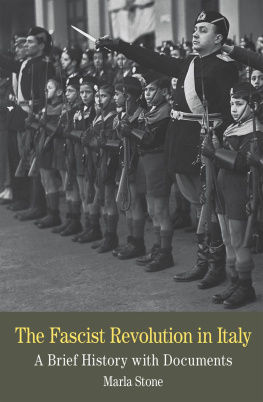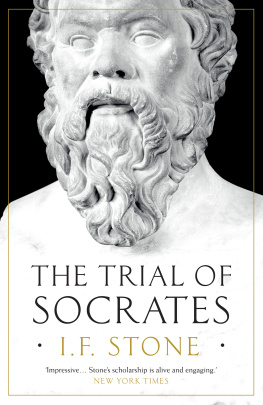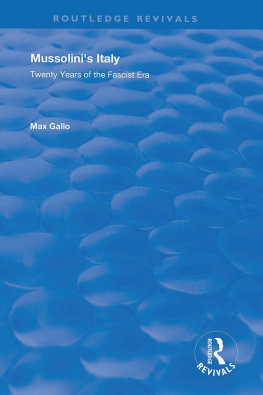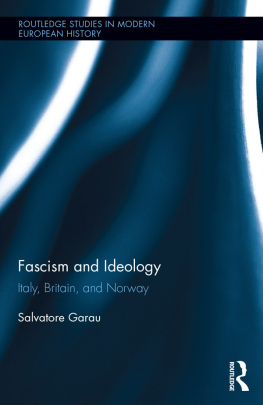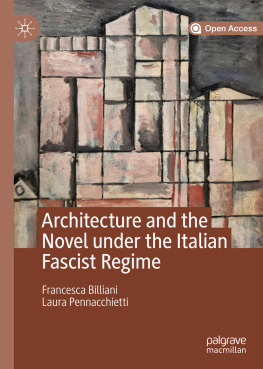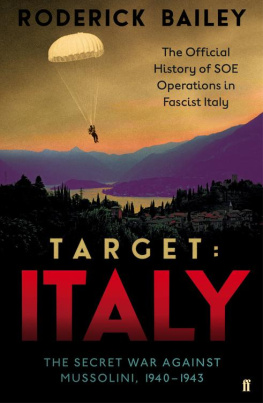Stone - The Fascist Revolution in Italy
Here you can read online Stone - The Fascist Revolution in Italy full text of the book (entire story) in english for free. Download pdf and epub, get meaning, cover and reviews about this ebook. year: 2012, publisher: Bedford/St. Martins, genre: Politics. Description of the work, (preface) as well as reviews are available. Best literature library LitArk.com created for fans of good reading and offers a wide selection of genres:
Romance novel
Science fiction
Adventure
Detective
Science
History
Home and family
Prose
Art
Politics
Computer
Non-fiction
Religion
Business
Children
Humor
Choose a favorite category and find really read worthwhile books. Enjoy immersion in the world of imagination, feel the emotions of the characters or learn something new for yourself, make an fascinating discovery.
The Fascist Revolution in Italy: summary, description and annotation
We offer to read an annotation, description, summary or preface (depends on what the author of the book "The Fascist Revolution in Italy" wrote himself). If you haven't found the necessary information about the book — write in the comments, we will try to find it.
The Fascist Revolution in Italy — read online for free the complete book (whole text) full work
Below is the text of the book, divided by pages. System saving the place of the last page read, allows you to conveniently read the book "The Fascist Revolution in Italy" online for free, without having to search again every time where you left off. Put a bookmark, and you can go to the page where you finished reading at any time.
Font size:
Interval:
Bookmark:
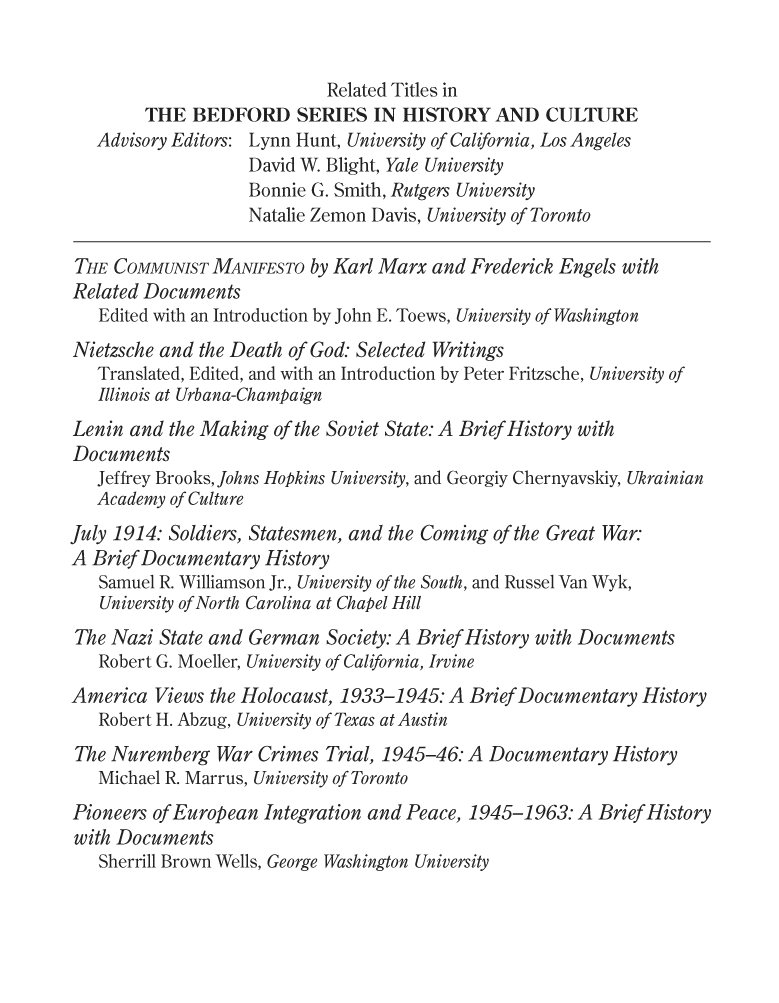
THE BEDFORD SERIES IN HISTORY AND CULTURE
A Brief History with Documents
- Marla Stone
- Occidental College

To Scott and Claudia
For Bedford / St. Martins
Publisher for History: Mary V. Dougherty
Executive Editor for History: Traci M. Crowell
Director of Development for History: Jane Knetzger
Senior Editor: Heidi L. Hood
Developmental Editor: Michelle McSweeney
Production Supervisor: Victoria Sharoyan
Senior Marketing Manager: Paul Stillitano
Editorial Assistant: Laura Kintz
Project Management: Books By Design, Inc.
Cartography: Mapping Specialists, Inc.
Permissions Manager: Kalina K. Ingham
Text Designer: Claire Seng-Niemoeller
Cover Designer: Marine Miller
Cover Photo: Hulton-Deutsch Collection/Corbis
Composition: Achorn International, Inc.
President, Bedford/St. Martins: Denise B. Wydra
Presidents, Macmillan Higher Education: Joan E. Feinberg and Tom Scotty
Director of Marketing: Karen R. Soeltz
Production Director: Susan W. Brown
Associate Production Director: Elise S. Kaiser
Manager, Publishing Services: Andrea Cava
Library of Congress Control Number: 2012942565
Copyright 2013 by Bedford/St. Martins
All rights reserved. No part of this book may be reproduced, stored in a retrieval system, or transmitted in any form or by any means, electronic, mechanical, photocopying, recording, or otherwise, except as may be expressly permitted by the applicable copyright statutes or in writing by the Publisher.
For information, write: Bedford/St. Martins, 75 Arlington Street, Boston, MA 02116
ISBN: 978-1-319-24269-5 (ePub)
Acknowledgments
Acknowledgments and copyrights are continued at the back of the book on , which constitutes an extension of the copyright page. It is a violation of the law to reproduce these selections by any means whatsoever without the written permission of the copyright holder.
The Bedford Series in History and Culture is designed so that readers can study the past as historians do.
The historians first task is finding the evidence. Documents, letters, memoirs, interviews, pictures, movies, novels, or poems can provide facts and clues. Then the historian questions and compares the sources. There is more to do than in a courtroom, for hearsay evidence is welcome, and the historian is usually looking for answers beyond act and motive. Different views of an event may be as important as a single verdict. How a story is told may yield as much information as what it says.
Along the way the historian seeks help from other historians and perhaps from specialists in other disciplines. Finally, it is time to write, to decide on an interpretation and how to arrange the evidence for readers.
Each book in this series contains an important historical document or group of documents, each document a witness from the past and open to interpretation in different ways. The documents are combined with some element of historical narrative an introduction or a biographical essay, for example that provides students with an analysis of the primary source material and important background information about the world in which it was produced.
Each book in the series focuses on a specific topic within a specific historical period. Each provides a basis for lively thought and discussion about several aspects of the topic and the historians role. Each is short enough (and inexpensive enough) to be a reasonable one-week assignment in a college course. Whether as classroom or personal reading, each book in the series provides firsthand experience of the challenge and fun of discovering, recreating, and interpreting the past.
Lynn Hunt
David W. Blight
Bonnie G. Smith
Natalie Zemon Davis
Between the world wars, Italian Fascists led Europes flight from liberal democracy to nationalist authoritarian one-party dictatorship. The Italian Fascist regime held power nearly twice as long as Germanys National Socialism whose genocidal fury would overshadow Italian Fascism in popular and historical memory. As the first of the Fascist regimes notorious for fueling the crisis of interwar Europe, the dictatorship of Benito Mussolini (19221945) served as the model and the inspiration for violent nationalist, antidemocratic, antisocialist, and anticommunist forces across the European continent. Through the study of Mussolinis Italy in this volume, students gain important insights into the collapse of European democracy between the world wars and understand the attraction of Fascism in the modern era.
World War I shook the continent and moved many Europeans toward radical solutions. In this context, Fascism emerged as the third way between the liberal capitalist status quo, which many held responsible for the war, and communism, in which others saw a divisive and bloody future as witnessed in the Bolshevik Revolution.
Attracting Europeans who sought new social and political models, Mussolini and Italys National Fascist Party transformed modern history. Inspired by Fascism in Italy (19221945), nearly every European nation, from Hungary to Britain, had either a Fascist party or a Fascist regime. As Fascism spread, it declared the death of the Enlightenment notion of a contract between the government and the governed, proposing instead that the will of the individual be expressed through submission to the state. Revolutionary in its aspiration to politicize all aspects of life and to mobilize all citizens into the Fascist project, Fascism demanded total allegiance to the state and its all-powerful leader. Indeed, the Fascists adopted the term totalitarian to describe the absolute revision of state and society that they envisioned.
Scholars have come to view Italian Fascism as a complex phenomenon that derived its power both from policies and programs that addressed real social and economic needs and from fear of its terror apparatus. Academic debate over popular support for Fascism and the extent to which Italians consented to Fascist rule has opened the door to the study of everyday life under Italian Fascism, giving rise to new scholarly work on culture, gender, social life, education, and youth, among other topics. Because Fascism collapsed the space between public and private and drew the individual into the collective national project, a full understanding of Fascist rule requires close examination of these social and cultural practices in addition to the study of politics and ideology.
The Fascist Revolution in Italy focuses on the tools used by the Fascist party to assume and maintain power in Italy and the experience of the partys rule. It examines Fascism from above that is, from the perspective of its leader, Benito Mussolini, and the government he led and from below, offering the multiple experiences of the Italian people who both suffered and benefitted under Fascist rule. The introduction gives the essential historical background to the rise of Fascism, its assumption of power, and its complex system of rule. Covering the years 19191943 and contextualizing the culture, politics, and society of the Fascist era, the introductory essay provides critical background to the documents that follow. The documents in Part Two reflect Fascisms many constituencies, from women to children, from artists to soldiers. Through documents dating from the founding of the Fascist movement in 1919 to the collapse of the regime in 1943, this collection presents Fascism as a new political, economic, social, and cultural paradigm and force. Organized chronologically within thematic groupings, the selections include official documents, such as speeches by Mussolini, Fascist party platforms, and legal decrees, as well as items that reflect the lived experience of Italians under Fascist rule, such as excerpts from middle school textbooks, songs, and personal accounts. The documents stress political, social, cultural, and gender history and include texts from Fascist youth organizations and womens groups, as well as visual artifacts. Eleven of the documents including those on Italian atrocities in Ethiopia, the Fascist Racial Laws, and Fascist propaganda in the war against the Soviet Union are available in English for the first time. Two maps, a chronology, questions for consideration, and a bibliography support the interpretive introduction and the thirty-seven documents.
Next pageFont size:
Interval:
Bookmark:
Similar books «The Fascist Revolution in Italy»
Look at similar books to The Fascist Revolution in Italy. We have selected literature similar in name and meaning in the hope of providing readers with more options to find new, interesting, not yet read works.
Discussion, reviews of the book The Fascist Revolution in Italy and just readers' own opinions. Leave your comments, write what you think about the work, its meaning or the main characters. Specify what exactly you liked and what you didn't like, and why you think so.

